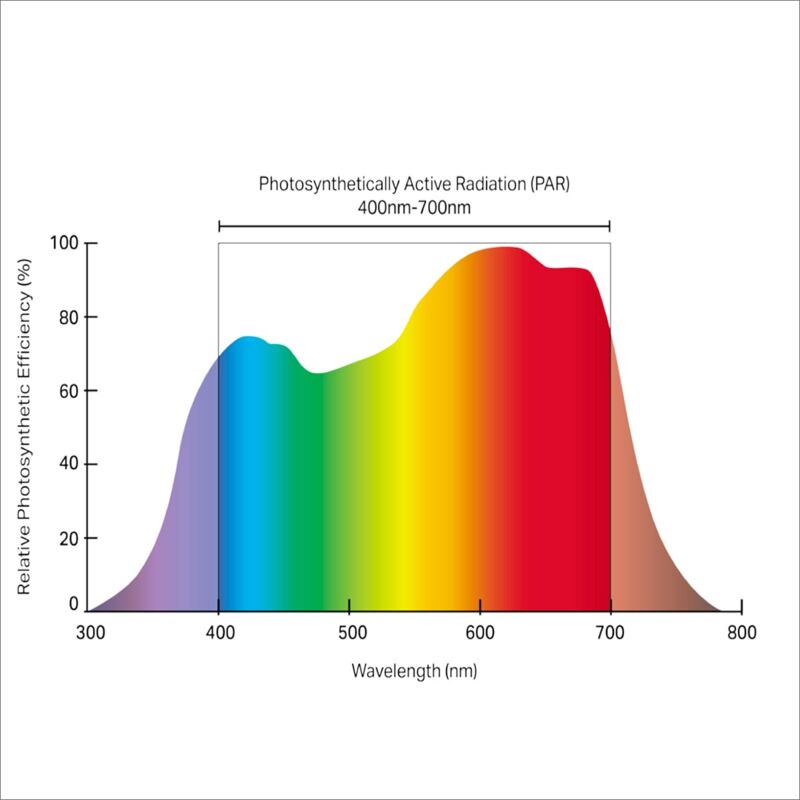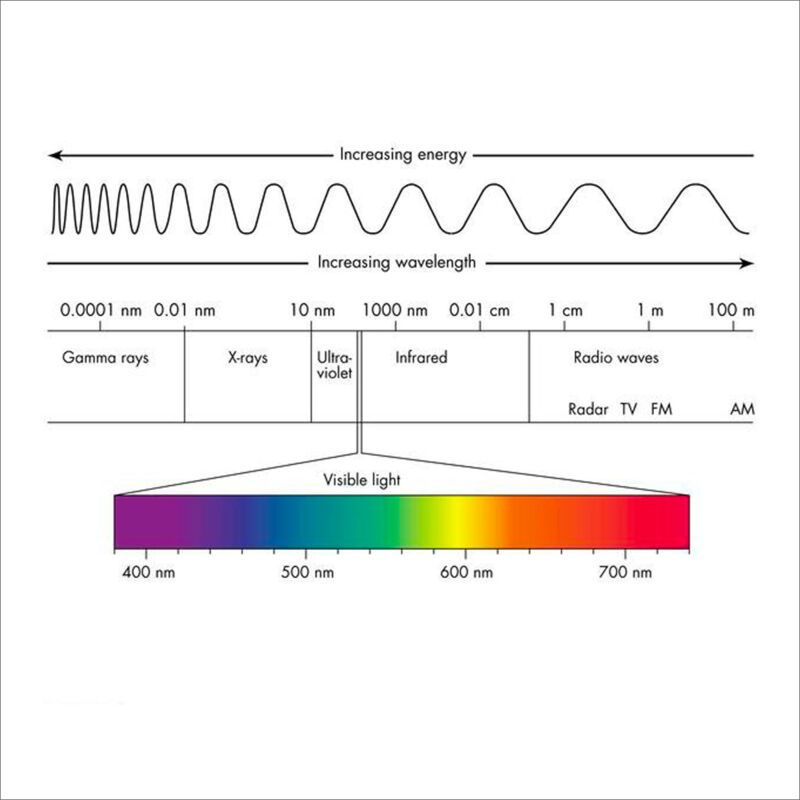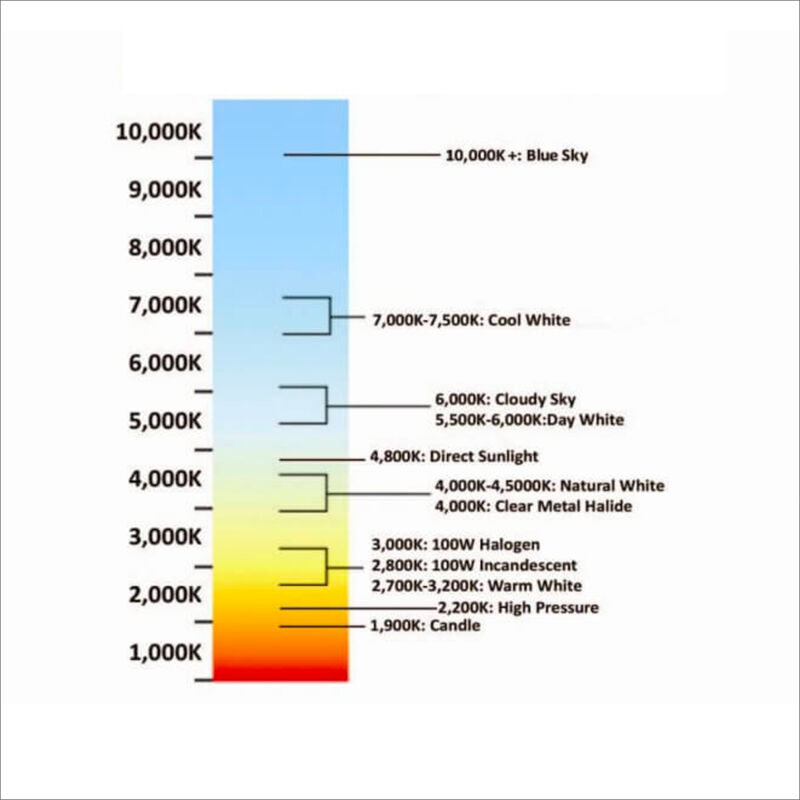Light
The most crucial part of the electromagnetic spectrum for plant growth is the visible light range between 400 to 700 nm, referred to as PAR light (photosynthetically active radiation). PAR light appears to the eye as white light, but it actually made up of red, orange, yellow, green, indigo and violet light, each with a different wavelength. The wave length in red light peaks at about 700 nanometers, and blue light, peaks at about 400 nanometers.


Dimensions of Light
Dimension 1—Quantity (brightness) of light
Light quantity refers to the light intensity or the number of photons (all colour photos contain the same amount of energy) that fall within a given area, either per second or per day. The light intensity stimulates and drives the plant's biomass (plant size).
- Lumen (lm) measure the brightness of the light, the total amount of visible light (to the human eye) from a lamp or light source. The higher the lumen rating the "brighter" the lamp will appear.
- Lux is a measure of the intensity, perceived by the human eye, of light that hits or passes through a surface.
- The lux (lx) is the SI derived unit of illuminance, measuring luminous flux per unit area. It is equal to one lumen per square metre. lux gives the illuminance on a surface, for example a desk or workstation
Lux and lumens are commonly used to measure light levels, they are photometric measuring the intensity of light as perceived by the human eye.
-
Watts measures the power provided to energise the light source to convert electrical energy to light energy and measures how much energy you would have to supply (i.e. kilowatt hours/cost)to create the light energy you need.
Kelvin temperature range (Brightness indicator):

Colour temperatures in degrees kelvin.
Confusingly, the colour temperature does not describe the actual temperature of the light source but the colour it produces, i.e. the light energy quantum made.
Counter-intuitively, the higher the colour temperature, the "cooler" a light will look; the lower, the warmer it will look to the human eye.
Light sources in the higher Kelvin temperature range (5000 to 6500 Kelvin) emit more blue spectrum light.
Those in the lower temperature range (2700 to 3000K) emit more red spectrum light.
Both sources provide full-spectrum light in the lower temperatures.
The Kelvin temperature of around 6500K is equivalent to direct Sun and is the luminosity required for photosynthesis in plants.